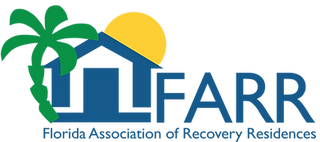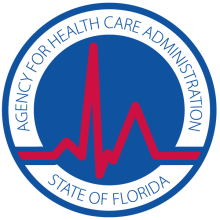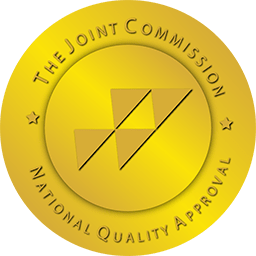Hallucinogens have no known medical use, but they can block pain sensation. This is dangerous because the hallucinogen user can injure him or herself easier.
Some drugs that are commonly used as hallucinogens are listed below:
- LSD (acid, red dragon, green dragon)
- Ecstasy
- Mescaline (peyote cactus)
- Psilocybin (mushrooms)
- Ibogaine PCP (angel dust, loveboat)
- PCP and cocaine (beam me up Scottie)
Plants such as psilocybin mushrooms and the peyote cactus have been used to produce visions as part of social and religious rituals. These plants contain chemical compounds such as mescaline, psilocybin, and ibogaine that are structurally similar to serotonin, and they produce their effects by disrupting the normal functioning of the serotonin system.
Availability of hallucinogens was limited by the climate and soil conditions needed for the plants until the development of LSD, a synthetic compound that can be manufactured anywhere. Abuse of hallucinogens increased dramatically after the 1960s when LSD use became widespread.
How Hallucinogens Work
Exactly how LSD and other hallucinogens alter perception is still unclear. Evidence from laboratory studies suggests that hallucinogens act on certain groups of serotonin receptors and that its effects are most prominent in two brain regions: the cerebral cortex, an area involved in mood, cognition, and perception; and the locus ceruleus, which receives sensory signals from all areas of the body. The locus ceruleus has been described as the brain’s “novelty detector” for important external stimuli.
LSD
LSD (lysergic acid diethylamide) was developed in Germany in 1938 and is manufactured from lysergic acid, which is found in ergot, a fungus that grows on rye and other grains. LSD has no accepted medical use in the United States and is one of the most potent mood-changing drugs.
Forms of LSD
Most commonly, LSD is dissolved, diluted, and applied to paper or other materials:
- Blotter acid – perforated sheets of colored paper with small squares (1/4 inches) containing individual doses.
Sometimes the pure crystal is powdered and mixed with binding agents to form:
- Tablets called “microdots”. Thing squares of gelatin called “window panes”.
- Dot CircleLSD is usually taken orally and may be occasionally found in liquid form.
Although LSD appears clear or white when pure, manufacturing variations and contaminants can turn it tan or black. LSD begins to discolor and degrade soon after manufacture. But it can be difficult to tell the purity or age of the LSD since it is added to colored or decorated blotter paper.

The Typical LSD Dose
Nowadays, the strength of LSD seems to be reduced from the level it reached during the 1960s and early 1970s. At that time, the dosage ranged from 100 to 200 micrograms per unit or higher.
The Drug Enforcement Administration reports that the strength of LSD samples obtained currently from illicit sources ranges from 20 to 80 micrograms of LSD per dose.
However, oral doses of LSD as small as 30 micrograms can produce effects that last 6 to 12 hours.
Effects of LSD
The effects of an LSD “trip” are unpredictable. Effects can be felt 30 to 90 minutes after taking LSD, and they vary according to:
- The user’s personality
- Mood
- Expectations
- Surroundings
- Amount taken
Sensory and emotional effects are much more dramatic than the physical effects:
- Feeling several different emotions at once or swinging rapidly from one emotion to another
- Confusion, suspicion, anxiety
- Delusions and visual hallucinations
- Changed sense of time and self
- Sensations seem to cross, with the feeling of hearing colors and seeing sounds
The physical effects include:
- Dilated pupils
- Higher body temperature
- Increased heart rate and blood pressure
- Sweating Loss of appetite
- Sleeplessness
- Dry mouth
- Tremors
- Dizziness
Some LSD trips can seem to be mentally stimulating and produce a sense of heightened understanding. But while the LSD trip can involve some feelings of euphoria, the sensory changes can be frightening and cause panic with acute adverse reactions on a “bad trip.” Some LSD users may experience severe, terrifying thoughts and feelings, fear of losing control, fear of insanity and death, and despair. Feelings may start to return to normal after 12 hours or so.
Albert Hofmann, the chemist who first synthesized LSD as he was researching medical applications in Switzerland in 1938, accidentally ingested some of the drug. He describes his experience:
“My surroundings . . . transformed themselves in more terrifying ways. Everything in the room spun around, and the familiar objects and pieces of furniture assumed grotesque, threatening forms. They were in continuous motion, animated, as if driven by an inner restlessness . . . . Even worse than these demonic transformations of the outer world were the alterations that I perceived in myself, in my inner being. Every exertion of my will, every attempt to put an end to the disintegration of the outer world and the dissolution of my ego, seemed to be wasted effort. A demon had invaded me, had taken possession of my body, mind, and soul.”
Fatal accidents have been known to happen under the influence of LSD. Large doses may cause convulsions, coma, heart/lung failure, or ruptured blood vessels in the brain. One use of this designer drug may cause irreversible brain damage.
Long-Term Effects of LSD
Psychosis – LSD use can lead to distortion or disorganization of a person’s capacity to recognize reality, think rationally, and communicate with others. Some LSD users experience devastating psychological effects that persist after the trip has ended, producing a long-lasting psychotic-like state. LSD-induced persistent psychosis may include dramatic mood swings from mania to profound depression, vivid visual disturbances, and hallucinations. These effects may last for years and can affect people who have no history or other symptoms of psychological disorder.
LSD users may manifest relatively long-lasting psychoses, such as schizophrenia or severe depression, although it is difficult to determine the extent and mechanism of the LSD involvement in these illnesses. Currently, the NIDA is funding studies that focus on the neurochemical and behavioral properties of LSD. This research will provide a greater understanding of its mechanisms of action.
Hallucinogen Persisting Perception Disorder – Many LSD users experience flashbacks, spontaneous, repeated, sometimes continuous recurrences of some of the sensory distortions originally produced by LSD. This occurs without having taken LSD again. A flashback occurs suddenly, often without warning. It may occur within a few days or later than a year after LSD use. This condition is typically persistent. In some cases, it continues for years after LSD users have stopped using the drug.
Flashbacks usually occur in people who use hallucinogens chronically or have an underlying personality problem. However, otherwise healthy people who use LSD occasionally may also have flashbacks.
Physicians call these flashbacks HPPD. These episodes may include hallucinations, but it most commonly consists of visual disturbances such as seeing false motion on the edges of the field of vision, bright or colored flashes, and halos or trails attached to moving objects.
Because HPPD symptoms may be mistaken for those of other neurological disorders such as stroke or brain tumors, sufferers may consult a variety of clinicians before the disorder is accurately diagnosed. There is no established treatment for HPPD, although some antidepressant drugs may reduce the symptoms. Psychotherapy may help patients adjust to the confusion associated with visual distraction and to minimize their fear of brain damage or psychiatric disorder.
LSD is not considered addictive, and most users will eventually stop taking it on their own. However, the damage may already be done by that point.
Chronic LSD use produces tolerance. So LSD users who take the drug repeatedly need to take more and more LSD to experience the same high they originally experienced when they first started using it. This is extremely dangerous, as LSD is very unpredictable.
LSD use also creates tolerance for other hallucinogenic drugs such as psilocybin and mescaline. However, it does not produce tolerance for drugs such as marijuana, amphetamines, and PCP, which do not act directly on the serotonin receptors affected by LSD. Tolerance for LSD is lost if the user stops taking the drug for several days.
Chronic use of LSD may lead to depression, violent behavior, anxiety, and distorted perception of time.
LSD does not seem to result in physical withdrawal symptoms when chronic use is stopped.
Indications of LSD Abuse
If you see the following symptoms, it may indicate that LSD is being used.
- Extreme changes in behavior and mood
- Sitting or reclining in a trance-like state
- Fearful demeanor
- Chills, irregular breathing, sweating, trembling hands
- Changes in sense of light, hearing, touch, smell, and time
- Increase in blood pressure, heart rate and blood sugar
Dissociative Drugs: PCP
- One use of PCP can cause multiple and dramatic behavioral changes and irreversible brain damage.
- Large doses may cause convulsions, ruptured blood vessels in the brain and irreversible brain damage.
- PCP may also cause unpleasant and potentially dangerous flashbacks long after it was used.
Dissociative drugs alter the distribution of the neurotransmitter glutamate throughout the brain. Glutamate helps regulate perception of pain, environmental responses, and memory.PCP is considered the typical dissociative drug, and the effects of PCP are also found in ketamine and dextromethorphan.
Dissociative drugs were initially developed as general anesthetics for surgery. They distort perceptions of sight and sound and produce feelings of detachment. The user dissociates from the environment and him or herself. But these mind-altering effects are not hallucinations. PCP and ketamine are therefore more properly known as “dissociative anesthetics.”
Dextromethorphan, a widely available cough suppressant, can produce effects similar to those of PCP and ketamine when taken in high doses.
Dissociative Drugs: PCP
- Rapidly changing behavior and feelings, immediately and long after use.
- Chronic use may cause persistent problems, depression, violent behavior, anxiety, distorted perception of time.
- Large doses may cause convulsions, coma, heart and lung failure, ruptured blood vessels in the brain.
- May cause hallucinations, illusions, dizziness, confusion, suspicion, anxiety, loss of control.
- Delayed effects include flashbacks, which may occur long after use.
There is no known withdrawal syndrome, but persistent chronic use can lead to longer, more intense “trip” episodes, psychosis, coma, and death.
Symptoms of PCP Use
Drug Treatment for Hallucinogens
Our professional drug treatment center staff is experienced in helping youth and people of all ages recover from drug and alcohol abuse. We provide a compassionate, supportive environment in our North Miami Beach, Florida, drug treatment center.
Admissions can be accepted 7 days a week. Trained addiction professionals conduct individual assessments that address each individual’s treatment needs. You’ll find our hallucinogen drug treatment programs offer access to a continuum of care that provides the intensity of therapy appropriate throughout each stage of recovery, from extended residential care to lifetime aftercare services. The individual program incorporates leading forms of therapy that have proven effective in addressing underlying causes of hallucinogen drug use, dual diagnosis, and issues with family, employers, school and the legal system.
We work with patients individually as well as in group sessions and a Family Program after any necessary detoxification from hallucinogens. Emphasis on recovery from hallucinogen use and maintained sobriety helps prepare the patient for gradual re-entry into society.
Hallucinogen drug treatment does not need to be voluntary. Often, a family member, employer, or the court system can be the motivating factor for an individual receiving drug treatment for hallucinogens.
If you or a loved one is using hallucinogens, please contact us right away. We’re here to help. Call us at 1 800-626-1980 or request more information.







